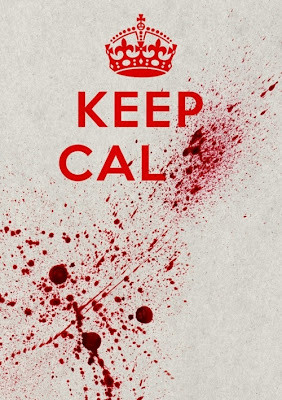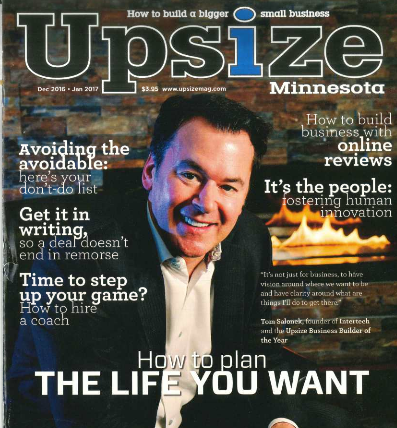 Fans of the iconic series Mad Men no doubt remember all the scenes with Don Draper talking with people outside his normal work and social environments. Draper was a rat in so many facets of his life. But he got one thing right: finding people who could see things from a different perspective, asking them compelling questions and then really listening to their responses.
Fans of the iconic series Mad Men no doubt remember all the scenes with Don Draper talking with people outside his normal work and social environments. Draper was a rat in so many facets of his life. But he got one thing right: finding people who could see things from a different perspective, asking them compelling questions and then really listening to their responses.
A recent article in Harvard Business Review (HBR) advocates that CEOs, and leaders at all levels, follow Draper’s example to “Burst the CEO Bubble.” The author, Hal Gregersen, is the executive director of the MIT Leadership Center, a senior lecturer in leadership and innovation at the MIT Sloan School of Management and the founder of the 4-24 Project. Gregersen interviewed more than 200 CEOs before writing this thought-provoking HBR piece.
His basic thesis: “Power and prestige insulate most CEOs from ideas and information that might alert them to looming opportunities or threats. Innovative executives work hard to break down the walls surrounding them by gaining exposure to a broad range of constituents and venturing off the beaten path. These CEOs actively seek out situations where they may be unexpectedly wrong, unusually uncomfortable, and uncharacteristically quiet. This helps them ask the right questions, discover previously unknown territory, and detect important but weak signals.”
This makes sense. I know from personal experience how easy it is to become ensconced in the “good-news cocoon.” Gregersen explains that this all-too-common CEO phenomenon happens when those close to us repeatedly “tell us what they think we want to hear and become fearful to tell us things they think we don’t want to hear.”
What to do? Gregersen advises:
- Framing the right questions
- Admitting mistakes quickly and moving on
- Getting outside your comfort zone
At Intertech, we build the process of gaining feedback from employees into our communications systems. This is particularly important because employees are the team members on the front lines with customers and they’re the technical experts who work hard to stay up-to-date on the latest technologies.
From our annual employee town hall meetings to stay interviews, we regularly encourage and make it easy and risk-free for employees to speak their minds. And their candid feedback is solicited before we undertake any new strategic direction.
As CEO, I consciously work to listen more than I speak in meetings with employees. It’s too easy to shut down conversation with a comment that might be perceived as negative or judgmental. As Gregersen points out, we don’t know what we don’t know. Creating situations where people can speak openly is our best hope for uncovering threats and opportunities.
Another strategy I find helpful: regularly engaging with an outside board of advisors. Our advisors are successful business people who have expertise in areas where I’m not as strong. They ask me tough questions, challenge my assumptions and generally tell me their version of the unvarnished truth.
Hearing things you don’t necessarily want to know is just the beginning. Once you learn an “inconvenient truth” you must decide how to deal with it. Gregersen quotes Walt Bettinger, the CEO of Charles Schwab, who notes: “The difference between successful executives and unsuccessful ones is not the quality of their decision making. Each one probably makes good decisions 60 percent of the time and bad ones 40 percent of the time—and maybe it’s even 55% to 45%. The difference is, the successful executive is faster to recognize the bad decisions and adjust, whereas failing executives often dig in and try to convince people that they were right.”
Failing fast is a principle embraced by most entrepreneurs and people inside large corporations working to foster innovation. “To be wrong as fast as you can is to sign up for aggressive, rapid learning,” says Stewart Brand, who founded The Whole Earth Catalog and the online community The WELL.
How do you know if you’re trapped in a CEO Bubble? Gregersen provides these 10 diagnostic questions:
- How many barriers do people have to cross to talk directly with you?
- How much of your typical workweek is spent outside your office or headquarters?
- When was the last time you were dead wrong about something at work?
- How quickly did you uncover your last mistake? How fast did you change course?
- How often do people ask you uncomfortable questions at work?
- How often do you talk with people who make you uncomfortable? How much time do you spend in places that cause you to feel uncomfortable?
- How many questions do you ask versus statements do you make in typical conversations?
- How often do you waiting silently (three seconds or more) for others to answer your questions?
- How many times this week have you said, “I don’t know” in response to a question?
- When was the last time your provocative questions gave rise to a catalytic story—one that radically transformed some part of your organization for the better?
 Pollsters continually report that Americans never have been more divided about how to run the country. Apparently, we even disagree about important political or economic facts.
Pollsters continually report that Americans never have been more divided about how to run the country. Apparently, we even disagree about important political or economic facts. Fans of the iconic series Mad Men no doubt remember all the scenes with Don Draper talking with people outside his normal work and social environments. Draper was a rat in so many facets of his life. But he got one thing right: finding people who could see things from a different perspective, asking them compelling questions and then really listening to their responses.
Fans of the iconic series Mad Men no doubt remember all the scenes with Don Draper talking with people outside his normal work and social environments. Draper was a rat in so many facets of his life. But he got one thing right: finding people who could see things from a different perspective, asking them compelling questions and then really listening to their responses. Variety, the so-called “spice of life,” can be challenging at work when team members have dramatically different work styles (don’t laugh; it’s a thing!). Building a successful business starts with building productive teams; but, as the saying goes, “the devil is in the details.”
Variety, the so-called “spice of life,” can be challenging at work when team members have dramatically different work styles (don’t laugh; it’s a thing!). Building a successful business starts with building productive teams; but, as the saying goes, “the devil is in the details.” With spring break just around the corner, I authored an article to help all get out of the office and on a beach or the slopes. Here’s a link to
With spring break just around the corner, I authored an article to help all get out of the office and on a beach or the slopes. Here’s a link to  My thanks to Beth Ewen and the team at Upsize magazine for awarding me the 2017 Upsize Business Builder of the Year. In the
My thanks to Beth Ewen and the team at Upsize magazine for awarding me the 2017 Upsize Business Builder of the Year. In the